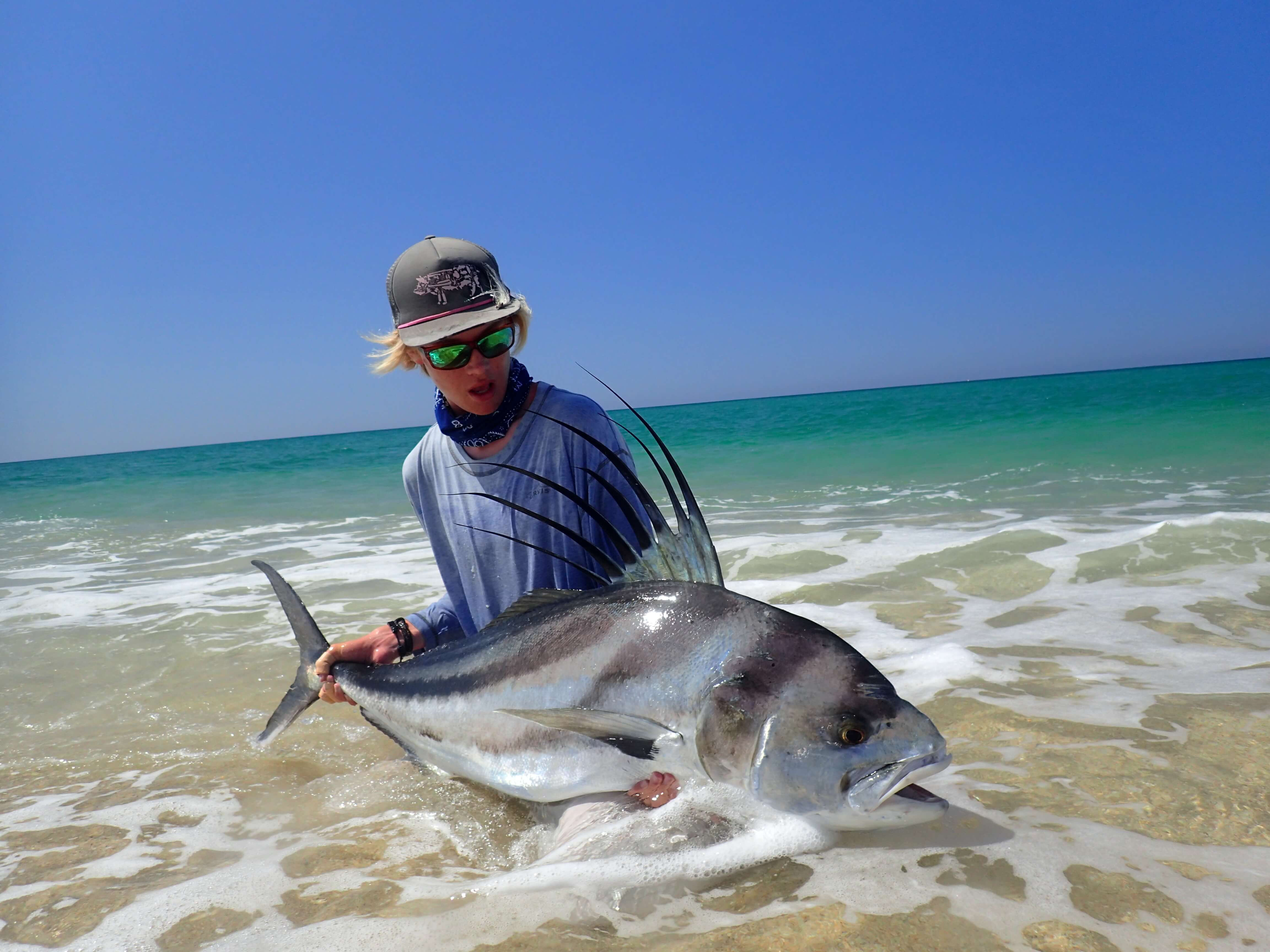By Arthur J. Lux, Contributing Editor
Photos by Kyle Banashek (@kylebanashek)
Angler: Patrick Timmins (@patricktimmins_)
(Originally appeared in Tail 39, January/February 2019)
For very good reasons, the roosterfish is quickly becoming a popular target among saltwater fly fishing enthusiasts. Roosters are hunted on the Pacific coast of Costa Rica and Panama in the winter and on the beaches of Mexico in the summer.
It’s assumed that the Panama Canal allowed them access to the other side, but no one knows if this has been confirmed; however, there have been roosterfish caught on the Caribbean side.
The Cabo big-fish habitat ranges from Ranchito, about 20 miles south of Los Muertos, up through the waters of Cerralvo Island and Baja beaches parallel to Cerralvo Island and as far up to Las Pillar if you’re looking for your best photo opportunity.
Unlike most other surf species, the roosterfish has a striking appearance: a big-profile body covered with silvery blue scales and distinctive black stripes, topped with a crown of seven long black dorsal spikes that can flair or flatten at will. Not your typical catch-of-the-day. If you’ve never seen the species, the crown can appear menacing at first look, but it’s relatively harmless. While hunting the shallow waters near beaches, roosters will sometimes flair their dorsal crown; to see it cutting through the water is a really special thing. Their excellent eyesight makes roosterfish fierce hunters in shallow water, and they have been known to beach themselves while chasing down baitfish. As with other jack-like species, roosterfish readily take flies.

Anglers often talk about the fight of a tarpon or a giant trevally, but roosterfish can hold their own with the heavyweights, They seem to be more active and more aggressive in the shallow waters along beaches, which is where the chaotic excitement begins. Get ready for a show. It might be because of the fierce competition among small schools of roosterfish, or simply because they only visit the flats and beaches to feed. They are usually accompanied by jack crevalle and other less notable surf species that hunt along beaches, and don’t be surprised if you catch a few of those by accident. What makes for such an adrenaline rush is the rooster’s purely erratic, completely unpredictable behavior and blinding speed. There’s no telling where they’ll pop and bust on bait, or even how many different places they’ll show. They can even change direction several times during a cast and frustrate the most patient angler. (Kind of sounds like permit fishing, doesn’t it…?)

Plan a trip for roosterfish. You definitely won’t be disappointed, as this species is worthy of its crown.


 SUBSCRIBE TO TAIL MAGAZINE
SUBSCRIBE TO TAIL MAGAZINE